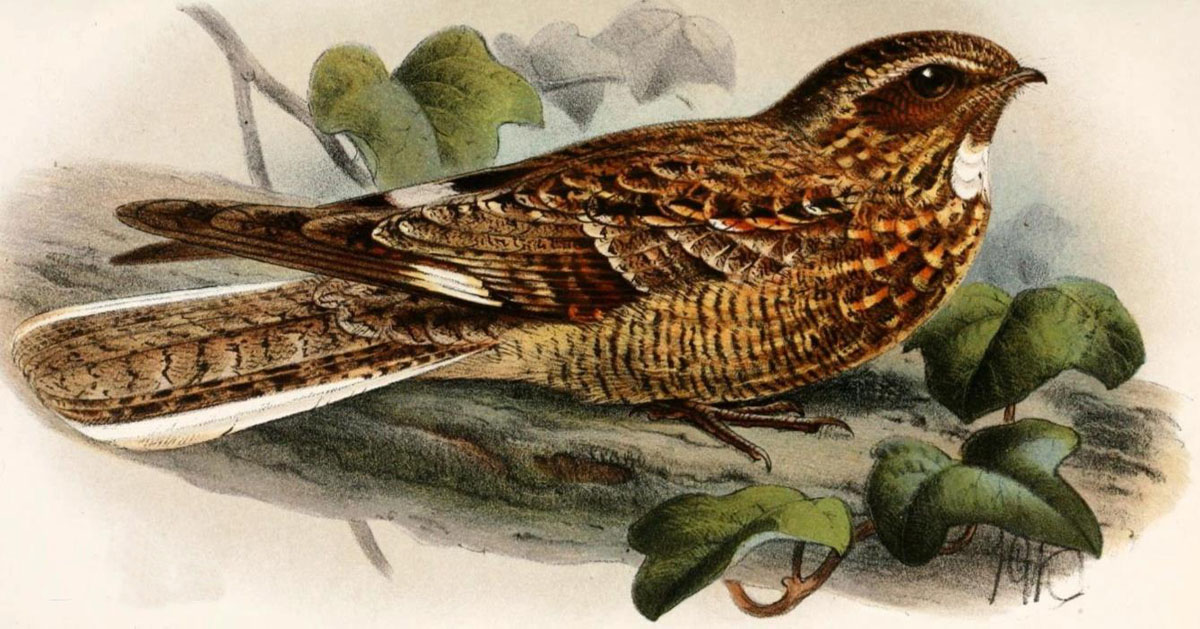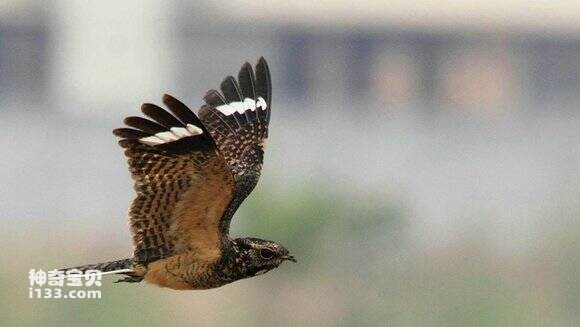Caprimulgus affinis
IUCN
LCBasic Information
Scientific classification
- name:Caprimulgus affinis
- Scientific Name:Nighthawk, bark-sticking, mosquito-bird,Savannah Nightjar,Allied Nightjar
- Outline:Climbing birds
- Family:Caprimulgiformes Caprimulgidae Caprimulgus
Vital signs
- length:25-26cm
- Weight:79-110g
- lifetime:8year
Feature
It particularly likes to eat pests such as beetles, moths and mosquitoes, so it is nicknamed the "mosquito bird".
Distribution and Habitat
In China, it breeds from southeastern Tibet to Yunnan, Guangxi, Guangdong, Fujian and even Taiwan Island. Abroad, it is distributed from the Indian subcontinent to Southeast Asia.
It likes to live in open forests and shrubs in tropical lowlands. It can be seen in the suburbs, sometimes during the day and sometimes on buildings. Its call is not as loud as other nighthawks, and its frequency is high, like noise.
Appearance
A very small nighthawk. Its body is gray-brown to dark brown with moth spots all over. The spots are fine and there are no large patches. It looks like a solid color from a distance. The outer tail feathers of the male are white, and there are two white patches on the throat, one on the upper and one on the lower. The female is mostly brown, with no white in the tail feathers. The iris is brown, the beak is reddish brown, and the feet are dark red.
Details
The nighthawk is a small bird of the family Noctilucentidae. Its upper body is mostly gray-brown, and its two pairs of outer tail feathers are almost pure white, with only a small dark tip, which is clearly visible when flying.

The nighthawk often moves alone or in pairs. It is nocturnal and mostly roosts on the ground or on branches during the day. It is active at dusk and at night. Its call is a low single tone. When flying, it flaps its wings slowly, briskly and silently, and its flying posture fluctuates up and down. It relies on its own protective color to avoid enemies. When it is dormant, its eyes are slightly open but it always remains alert. If it encounters a natural enemy approaching, it will not fly until it is very close. The legs are short and weak, and they almost never walk. All activities depend on vertical take-off and landing.
The male bird sings a loud and slightly harsh single tone "追伊~", which is repeated many times, with an interval of 0.8 to 3 seconds between the two sounds. The same individual can sing continuously for 45 minutes, and sing all night long, with the peak period after sunset and 1 hour before sunrise. The female bird has a deeper voice and sings less frequently. It only takes off and joins the male bird to sing together to drive away the enemy when other nighthawks invade the territory during the breeding period. Usually it sings while flying, but it also perches at a high place to sing.

It mainly feeds on various flying insects in the air, mainly Lepidoptera, Coleoptera, Orthoptera, etc. It starts to fly and forage in the evening when there is still twilight, flying back and forth irregularly and quickly in the air, and directly swallows flying insects such as moths in the air with its mouth open. When there are few insects in the middle of the night, it will use a fixed point waiting method, waiting for prey to appear and then rushing out to prey. It relies on vision to forage, and will use the lights of the city at night to forage.









